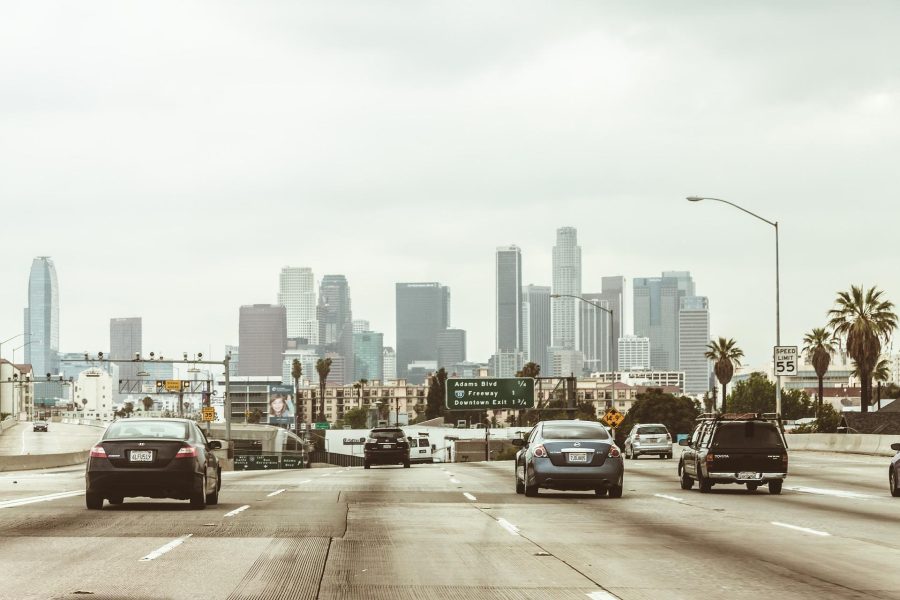Maybe it’s only natural, given that this is a city that earns its keep selling compelling stories. But all too often, these myths are wrong, and in some cases, they form the basis of bad policy. Let’s run through three widely believed misconceptions about planning in Los Angeles.
Los Angeles Is a Desert. With another summer of drought ahead of us, you’re sure to hear this claim a lot in the months to come. And isn’t it obvious? It never rains in Los Angeles—why else would folks put up with the high rents and bumper-to-bumper traffic? If it weren’t for the herculean efforts of water baron William Mulholland, the thinking goes, our town would be an arid wasteland, unfit for human habitation. Right?
As a delightfully detailed investigation in LAist suggests, Los Angeles isn’t a desert. Strictly speaking, a desert gets less than 10 inches of rain a year, and while it doesn’t rain much here, we get more than that. According to the Köppen climate categorization system, metropolitan Los Angeles is mostly a blend of Mediterranean and semi-arid microclimates. And if you know anything about the history of our city, you’ll know that there were once orchards in Hollywood and ranches in the San Fernando Valley.
Is Los Angeles dependent on piped-in water? Yes—as are basically all cities. But is it a desert? Almost certainly not.
Los Angeles Is Low-Slung Because of Earthquakes. A weird feature of life in Los Angeles is anxiously waiting for the “big one” to strike. The ever-present risk of the San Andreas fault rupturing is a mainstay of Southern California films and novels, and many locals have fresh memories of the 1994 Northridge earthquake. If you raise the conspicuous lack of mid- and high-rise architecture in the region, you’ll likely hear this offered up as a reason why—tall buildings and earthquakes just don’t mix.
Of course, this would be news to the rest of the Pacific Rim, a region defined by both its earthquakes and skylines. Ironically, the typical high-rise in a city in Tokyo or Vancouver is almost certainly safer than most buildings in Los Angeles—built to modern codes as they are, new buildings are almost always better adapted to withstand an earthquake, regardless of height. Meanwhile, Los Angeles is currently scrambling to retrofit thousands of low-rise “soft story” apartment buildings—many built over a half-century ago—that are at risk of collapsing.
Los Angeles isn’t low-slung because of earthquakes—it’s low-slung because of its uniquely restrictive zoning.
Car Companies Conspired to Kill the Streetcar System. If you’ve ever seen Who Framed Roger Rabbit?, you already know the story: Los Angeles once had the largest rail transit system in the world. Pacific Electric “Red Cars” once connected everything from Redlands to San Fernando to Newport Beach. But in the post-war period, a consortium led by General Motors conspired to buy up and shutter a healthy streetcar system and force Angelenos to buy cars—and in true Hollywood fashion, they got away with it, too!
There’s just one problem: it’s almost all wrong. By the late 1940s, the Los Angeles streetcar system was in a rough way—as was every other streetcar system in the US. Streetcars were then operated by for-profit companies, under the strict supervision of local governments. Yet price controls on fares, onerous service mandates, high labor costs, and deferred maintenance gradually took the “profit” out of for-profit. Combine all that with the rise of the car and the Los Angeles streetcar’s days were probably always numbered—no conspiracy required.
In the 2020s as in the 1940s, before jumping to a conspiracy, ask yourself: was this the inevitable result of bad policy?
Nolan Gray is a professional city planner, housing researcher at UCLA, and Pacific Research Institute fellow.


